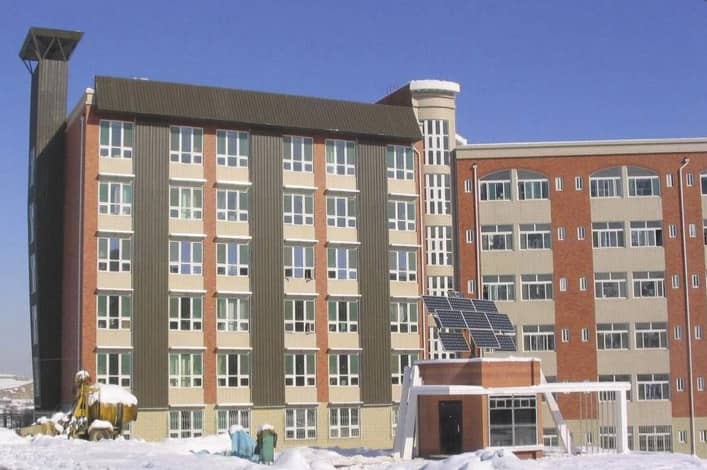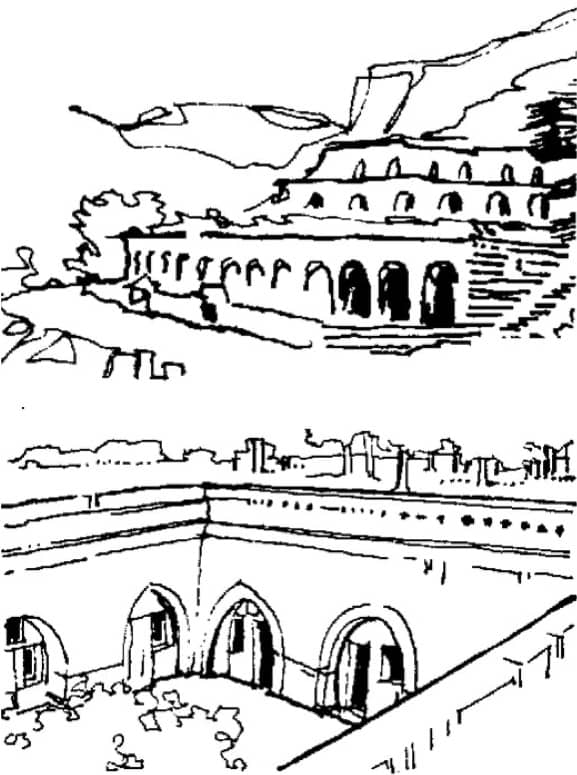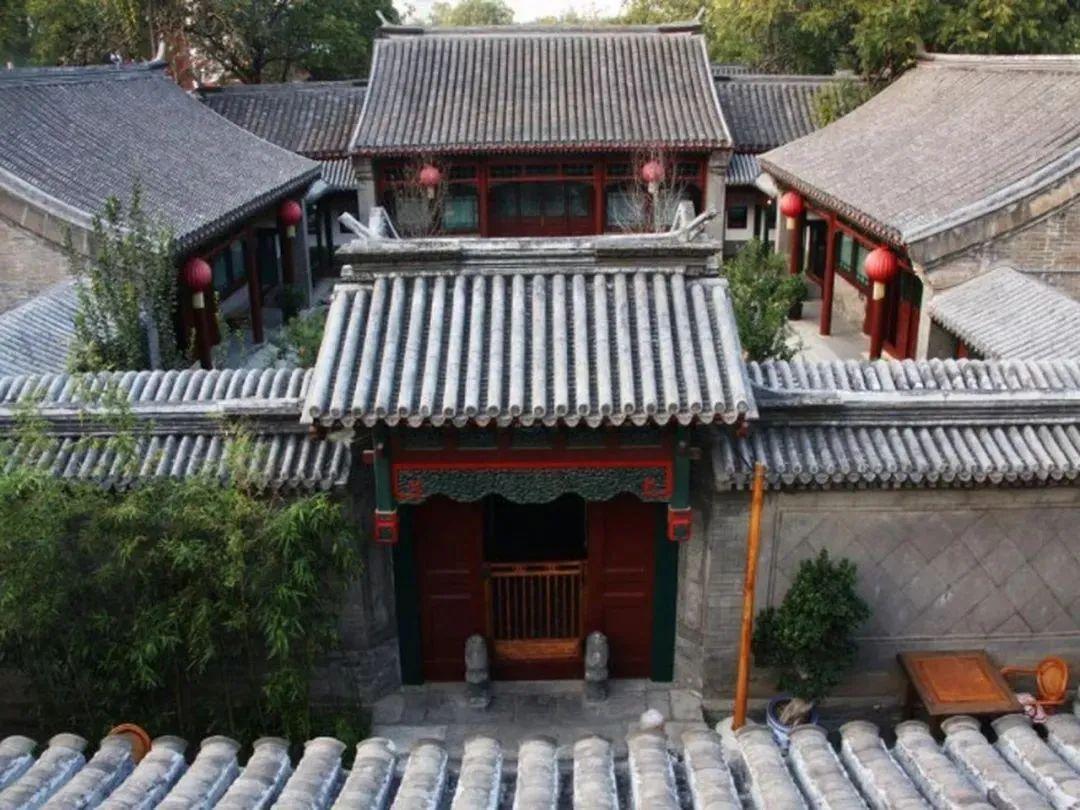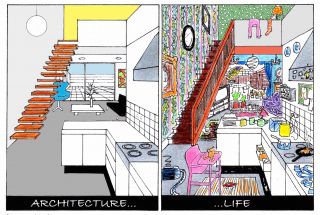
www.buildingsandcities.org/insights/research-pathways/greening-china.html
Greening China's Built Environment

RESEARCH LEGACY: personal reflections on a career in research
Kaixun Sha (Shandong Jianzhu University) reflects on a research career to 'green' the built environment in China. Key insights explain why sustainability in China depends upon much more than technology: the institutional environment and willingness, international knowledge exchange and cooperation, making practical trade-offs, and harnessing professionalism to ensure appropriate governance and outcomes.
The Cultural Revolution in China (1966-1976) delayed the start of my higher education. I was 31 years old when I went up to Tsinghua University in 1978 to study building HVAC systems, after having worked as a mechanic in a textile mill for 11 years. At that time Tsinghua University was renowned for its title 'the cradle of engineers' in China, with a heavy emphasis on technical rationality. After graduation in 1983 I joined Shandong Jianzhu University (SJU) in Jinan, the capital city of Shandong province in eastern China and where I worked until my retirement.
I briefly returned to Tsinghua University in 1985 to study for a master's degree at School of Economics and Management. During my graduate studies I accepted Simon's (1957) concept of bounded rationality and Williamson's (1979, 1985) thinking about transaction costs which profoundly influenced me in the past decades. Simon (1975: xxiv) asserted that human actors are 'intendedly rational, but only limitedly so', implying that in the real world finding satisfactory solutions is more reasonable than finding optimum solutions. As 'an empirical success story,' transaction cost economics convinced me that institutions matter and that all feasible alternatives (workable arrangements) are flawed in comparison with a hypothetical ideal. These ideas expanded my perspective from pure technical rationality to socio-technical rationality, with the focus shifted from efficiency (doing things right) at the technical level to effectiveness-doing right things-and value creation at the strategic level, and then to creating a fruitful context at an institutional level.
Importance of international communication and cooperation

I first came across the word 'sustainability' in the early 1990s, but could not find it in all versions of English-Chinese dictionaries that I had in my hand. Then I realized that this emerging concept was of considerable significance for China's building sector to address the challenges brought about by rapid urbanization and super-scale infrastructure construction. In the following years I paid close attention to the progress in theory and practice of sustainable construction and green building unfolding internationally, and introduced the relevant information to Chinese researchers, students and practitioners by publishing a series of articles in Chinese journals. According to the suggestion of Richard Lorch, the then chief editor of Building Research and Information (BRI) and authorization by its publisher, I organized a group to translate the BRI's abstracts into Chinese language during the period between 2004 and 2008. Now the translation work has resumed in Buildings and Cities (B&C) by my colleague, Professor Youchuan Chen at SJU. This time-consuming activity helps Chinese students and researchers engage with the foreign language articles, generate further discussion and thought, and enhances SJU's reputation in academic circles.
While 'importing' international knowledge, I also engaged in 'exporting'
by publishing articles in International Journals to introduce the status and
trends in sustainable construction and green building in China. For example,
traditional dwellings with Chinese characteristics such as loess caves on the Loess Plateau in northwestern
China (Figure 2) and Siheyuan (family house) (Figure 3) were presented in terms
of the ecological thinking embodied in them, their historical and cultural
values, as well as potentials and challenges in preserving and upgrading them
(Sha et al., 2000; Sha et al., 2006). Here, the loess cave
dwellings benefitted directly from the protective thermal mass of the ground
and the Siheyuan by having an enclosed courtyard with inward houses on four
sides to protect inhabitants from the harsh winter winds and the dust storms of
spring, while absorbing sunshine in the winter. In spite of thousands of years of history, they still have reference
value for the research of passive energy savings in contemporary buildings. 
In autumn 2002 I was a visiting scholar at the School of Architecture, University of British Columbia and contacted the International Centre for Sustainable Cities (ICSC) in Vancouver to explore the possibility of a cooperation project. A project was successfully launched in July 2003 in which Canadian consultants worked with the ICSC, SJU's Design Institute and Industry Canada's 'Technical Early Action Measures' (TEAM) to introduce technologies appropriate for a dormitory in Jinan's climate. Industry Canada funded the incremental costs of the Canadian-sourced technologies used in the project - the first international cooperation demonstration 'green building' on China's university campuses. The 72-unit dormitory for SJU's new campus (Figure 1) incorporates energy efficiency measures, renewable energy technologies (solar wall for heating, solar chimney for cooling, PV), water saving features and environmental quality exceeding typical Chinese university buildings. Analysis indicated that the integration of these technologies could potentially reduce greenhouse gas emissions by 25% to 78% depending on the degree of integration. Monitoring by a research group of SJU after occupancy in October, 2004 confirmed that all heating and ventilation systems worked as intended. The project finally achieved a win-win result. On one hand, it provided a valuable demonstration for the China Green University Network (CGUN) that was established in 2011 with the aim of implementing technologies in university campuses to reduce greenhouse gas emissions. On the other hand, it helped the Canadian participants to share their ideas, knowledge and experiences with their Chinese counterparts.
Importance of trade-offs
I conducted three research projects to explore a 'green' approach to the built environment during the period between 2007 and 2013. An examination of the promotion of energy-efficient technologies revealed that China was not short of technology - there was already an abundance of technologies that had proved effective in practice, but they had not yet been effectively applied in China due to a lack of sufficient incentives. This, to a great extent, can be attributed to an institutional environment characterized by the GDP-first value rather than a value of putting people first and a prevailing practice of 'rule of the individual' rather than a 'rule of law.' It became evident that the determinant for the success or failure of sustainable construction is not a question of technology but rather the institutional environment that exerts influence on the willingness of individuals/organizations to deploy energy-efficient technologies in buildings.
Following a research project aimed at promoting the technology for exterior wall insulation in Shandong province, we proposed two principles. The first was concerned about the relationship between technology and economy: economic practicality first, technological feasibility second. We were convinced that technology is a major factor for sustainable construction, but what is even more important is that existing technologies can be effectively applied in practice. Any technology, no matter how advanced it is, would not find widespread adoption without sufficient incentives. The second principle is concerned with the relationship between so-called 'the best solutions' and 'the most suitable solutions': pursue the most suitable rather than the best solutions. It had been proved that theoretically optimal solutions could only act as a demonstration in most cases due to their high costs, while those with some shortcomings are often widely accepted. In accordance with the two principles we developed a cost-value system by making trade-offs between short-term and long-term interests, between benefits and costs, between urban and rural areas, and among the clients, designers and contractors of construction projects. It is hoped that the system is helpful in promoting energy-efficient technologies in China with reduced resistances and enhanced incentives.
Importance of governance
In the early 2000s, I initiated a new research program supported by the National Natural Science Foundation of China regarding construction project governance. As an art of complexity, a governance paradigm is about new mindset and methods, which can be viewed as a distributed coordination mechanism to 'infuse order, thereby to mitigate conflict and realize mutual gains' (Williamson, 2005: 3). One of the research projects examined building energy conservation in rural China and developed a three-level analysis framework in accordance with the principles of the economics of governance (Sha and Wu, 2016).
A central question for sustainable construction is who has the responsibility of being the guardian for protecting the future generations and their interests? The market fails to provide this protection by itself since the free-market is oriented to short-term interests, and is thereby inherently incompatible with sustainability. It is also difficult for the government to do due to its structural limitations (e.g., tenure limitation, dual status dilemma-acting not only as legislators and policy-makers, but also as the largest construction clients in China). The deficiency of both markets and governments thus affords the potential responsibilities to professionals and their institutions. In the light of this, the primary emphasis of our research was directed at creating a favorable institutional environment in which markets (the invisible hand), governments (the visible hand), and professionals and their institutions (the third hand) play complementary roles in regulating stakeholders' behaviour. This we believed would create a context in which people who are willing to do right things would do so.
Some reflections
In hindsight, my academic career has been in step with China's reform and its opening up to the rest of the world. The country's path to sustainable construction is different from developed countries due to its peculiar history, culture and socioeconomic conditions, which entails a distinct research paradigm: a paradigm that pays more attention to the institutional environment than to technologies. Since the early 1990s the Chinese government has tried to enhance the sustainability in the built environment by enacting a series of regulations and policies. Initially progress was slow, but the institutional environment has improved since the late 2000s, with environmental issues being put on the agenda of local governments. The emphasis on GDP and growth is no longer as predominant as before. Positive and negative experiences that were drawn from difficulties in the early stage. The achievements in recent years make me more confident that international communication and cooperation matter and that institutions matter in greening China's built environment. Professionals and professionalism should play a critical role in these two aspects. In my role as a senior academic, I understood and acted upon the need to foster this change.
My advice to students and young researchers: it is never too late to learn from the literature and from practice. For Chinese researchers and students, it is essential to learn by participating in international activities and keeping pace with the cutting-edge developments, while making contributions, whether big or small, to its development. While the purpose of learning is to obtain knowledge and to have a better understanding of the world, the application of knowledge is more important. This not only involves technologies, but also government policies and practices.
References
Sha, K.X, Deng, X.H. and Cui, C.B. (2000) Sustainable construction in China: Status quo and trend, Building Research and Information, 28 (1), 59-66.
Sha, K.X, Song, T., Qi, X. and Luo, N.J. (2006) Rethinking China's urbanization: an institutional innovation perspective, Building Research and Information, Vol.34 (6), 573-583, 2006.
Sha K.X. and Wu S.Y. (2016) Multilevel governance for building energy conservation in rural China, Building Research and Information, 44 (5-6), 619-629.
Simon, H. (1957) Models of Man, New York: John Wiley & Sons.
Williamson, O. E. (1979) Transaction-cost economics: The governance of contractual relations, Journal of Law and Economics, 22(2), 233-261.
Williamson, O. E. (1985) The economic institutions of capitalism, New York: Free Press.
Williamson, O.E. (2005) The economics of governance, The American Economic Review, 95(2), 1-18.
Latest Peer-Reviewed Journal Content
Designing for pro-environmental behaviour change: the aspiration–reality gap
J Simpson & J Uttley
Lifetimes of demolished buildings in US and European cities
J Berglund-Brown, I Dobie, J Hewitt, C De Wolf & J Ochsendorf
Expanding the framework of urban living labs using grassroots methods
T Ahmed, I Delsante & L Migliavacca
Youth engagement in urban living labs: tools, methods and pedagogies
N Charalambous, C Panayi, C Mady, T Augustinčić & D Berc
Co-creating urban transformation: a stakeholder analysis for Germany’s heat transition
P Heger, C Bieber, M Hendawy & A Shooshtari
Placemaking living lab: creating resilient social and spatial infrastructures
M Dodd, N Madabhushi & R Lees
Church pipe organs: historical tuning records as indoor environmental evidence
B Bingley, A Knight & Y Xing
A framework for 1.5°C-aligned GHG budgets in architecture
G Betti, I Spaar, D Bachmann, A Jerosch-Herold, E Kühner, R Yang, K Avhad & S Sinning
Net zero retrofit of the building stock [editorial]
D Godoy-Shimizu & P Steadman
Co-learning in living labs: nurturing civic agency and resilience
A Belfield
The importance of multi-roles and code-switching in living labs
H Noller & A Tarik
Researchers’ shifting roles in living labs for knowledge co-production
C-C Dobre & G Faldi
Increasing civic resilience in urban living labs: city authorities’ roles
E Alatalo, M Laine & M Kyrönviita
Co-curation as civic practice in community engagement
Z Li, M Sunikka-Blank, R Purohit & F Samuel
Preserving buildings: emission reductions from circular economy strategies in Austria
N Alaux, V Kulmer, J Vogel & A Passer
Urban living labs: relationality between institutions and local circularity
P Palo, M Adelfio, J Lundin & E Brandão
Living labs: epistemic modelling, temporariness and land value
J Clossick, T Khonsari & U Steven
Co-creating interventions to prevent mosquito-borne disease transmission in hospitals
O Sloan Wood, E Lupenza, D M Agnello, J B Knudsen, M Msellem, K L Schiøler & F Saleh
Circularity at the neighbourhood scale: co-creative living lab lessons
J Honsa, A Versele, T Van de Kerckhove & C Piccardo
Positive energy districts and energy communities: how living labs create value
E Malakhatka, O Shafqat, A Sandoff & L Thuvander
Built environment governance and professionalism: the end of laissez-faire (again)
S Foxell
Co-creating justice in housing energy transitions through energy living labs
D Ricci, C Leiwakabessy, S van Wieringen, P de Koning & T Konstantinou
HVAC characterisation of existing Canadian buildings for decarbonisation retrofit identification
J Adebisi & J J McArthur
Simulation and the building performance gap [editorial]
M Donn
Developing criteria for effective building-sector commitments in nationally determined contributions
P Graham, K McFarlane & M Taheri
Join Our Community

The most important part of any journal is our people – readers, authors, reviewers, editorial board members and editors. You are cordially invited to join our community by joining our mailing list. We send out occasional emails about the journal – calls for papers, special issues, events and more.
We will not share your email with third parties. Read more



Latest Commentaries
COP30 Report
Matti Kuittinen (Aalto University) reflects on his experience of attending the 2025 UN Conference of the Parties in Belém, Brazil. The roadmaps and commitments failed to deliver the objectives of the 2025 Paris Agreement. However, 2 countries - Japan and Senegal - announced they are creating roadmaps to decarbonise their buildings. An international group of government ministers put housing on the agenda - specifying the need for reduced carbon and energy use along with affordability, quality and climate resilience.
Building-Related Research: New Context, New Challenges
Raymond J. Cole (University of British Columbia) reflects on the key challenges raised in the 34 commissioned essays for Buildings & Cities 5th anniversary. Not only are key research issues identified, but the consequences of changing contexts for conducting research and tailoring its influence on society are highlighted as key areas of action.